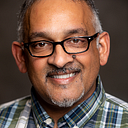California Mathematics Framework: Hope, Healing, and Humanity
I don’t live in California. I don’t even live in the United States. I live in Canada. My friend, Jo Boaler, who was part of the team that put together the CMF, sent me a message on Twitter to let me the know that the revised version was now available.
If you are within any meaningful radius of math education, you also are aware of all the hotly contested debates around the CMF, with some media outlets sensationalizing the construction as another chapter in the “Math Wars”, always pitting the folks who are anchored to traditional math education vs. the progressives.
Before I dive deeper into my impression of the CMF, I would like to share with you some related history that very few of you would be aware of. That would be the 1968 Hall-Dennis Report, which looked a new approach to teaching students in the Province of Ontario. Emmitt Hall was a judge on the Supreme Court of Canada. That is how powerful this document was.
I also had my formative years of education under this document — open classrooms, team teaching, and student-centered learning. All I can say is that I have the fondest memories of that learning and my teachers.
The report was just as exhaustive as the CMF, and while the CMF is only focused on the subject of mathematics, its general philosophy is very much aligned to the hopeful vision of general education that came of the late 60's.
The report, like CMF, referenced some weighty scholars like Rousseau, Dewey, and Whitehead. It is Alfred North Whitehead which is the person that bridges the two reports. He was a mathematician, philosopher, educator, and writer. His revolutionary book, Aims of Education(1929), was referenced in the Hall-Dennis report.
The current climate of education in general in the United States is one that was the climate of education prior to the Hall-Dennis report.
Prior. We are in 2023, and education has swung back in many States to compliance, authoritarianism, and general shading of all required measures of equity/culturally relevant learning — which was robustly addressed throughout the Hall-Dennis report — into the margins.
Why have there been strong disagreements about math curricula for what seems like forever? Well, I think the place to start is what is the purpose of learning mathematics? But, I think it is much broader scope of questions.
These are the questions that anyone who wants an honest audit of the CMF must start with.
The first thing I spent a lot of time in, naturally I suppose, was the 43 page Chapter 1: Mathematics for All: Purpose, Understanding, and Connection.
While the Framework missed an opportunity to install Alfred North Whitehead’s Rhythm of Learning — that learning is broken down into Stages of Romance, Precision, and Generalization — there are enough other references to understand that a child’s first introduction to mathematics must be filled with awe and wonder.
The standards hold the promise of enabling all California students to become powerful users of mathematics in order to better understand and positively impact the world — in their careers, in college, and in civic life. The Mathematics Framework provides guidance to California educators in their role of helping fulfill that promise. CMF, Chapter 1, page 3
The attention to “civic life” is not new. In the early 30’s, the role of mathematics included the idea of informed citizenry. Also, in order for all students to be powerful users — and consumers — of mathematics, it is critical that mathematics play an interdisciplinary role in learning.
That is why the word connection is emphasized throughout the CMF.
The full gift of mathematics, however, lies in the most inclusive and broadest possible purpose of learning mathematics.
In 2022, I was honoured to serve on the Planning Committee for the Annual NCTM Conference and Exhibition. I wrote this strand.
In 2023, I am now working involved in two important non-profit organizations. The Human Restoration Project and The Prison Math Project. I would like to share you some reflections from Christopher Havens, who is serving a 25 year sentence in a maximum security prison in the State of Washington.
If this is what someone who has even less than almost all our students, don’t we have a moral imperative to ensure that is potential of seeing mathematics in this light is available? That the restorative power of mathematics — which has been there throughout history in places like death beds, concentration camps, suicidal ideation, racism, and sexism — flourishes in all classrooms in not just California, but everywhere?
For me, while I definitely have some strong progressive roots, I am also a steadfast traditionalist in that algebra and calculus must be strongly attended to. Algebra is not an appendage of mathematics. It is its bloody circulatory system. And, calculus, for me at least, is just beautiful mathematics. As such, right up front, the CMF states its strong commitment to all mathematical topics — including calculus.
The California Mathematics Framework is now the most comprehensive math curriculum in North America in terms of its societal update and a firm reminder that civic participation and personal joy are also important pillars of purpose. I was wholly satisfied by the opening Chapter, and skimming through the subsequent ones, they support the ambitions laid out there with strong content and pedagogy.
The last thing I leave you with is a rare print from 1956 by Mark Launer. The title and the imaginative tree house of learning says it all.
One of the branches, which has been out of reach for so many of our students, surely must be “The Eternal Promise of Mathematics”. The California Mathematics Framework is an attempt to give all our students a ladder to that world…
________________________________________________________________
